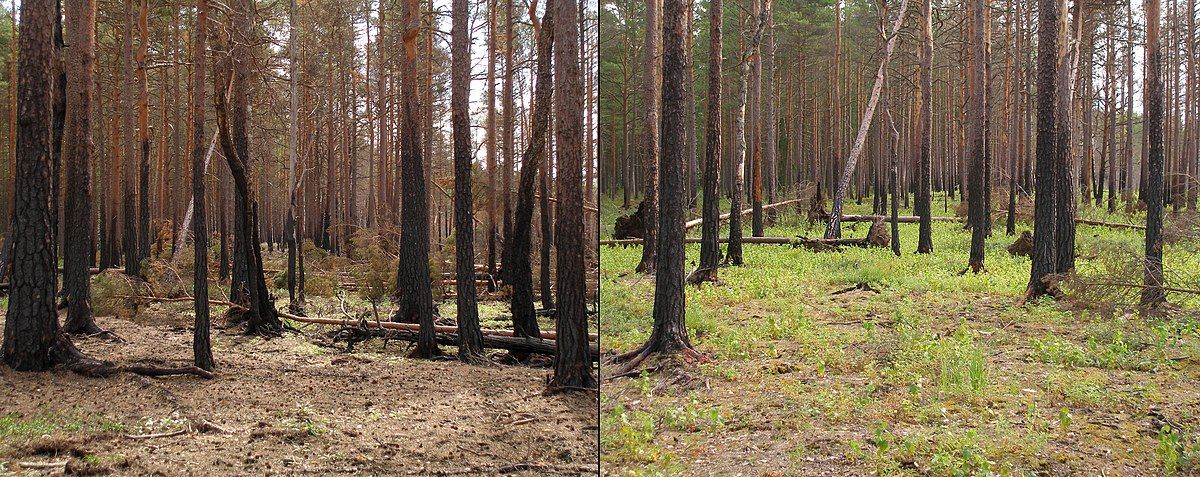Species Replacement Drives Cyclical Changes
Cyclical succession
Cyclical succession is a type of ecological succession where ecosystems repeatedly cycle through a series of stages.
- It is marked by predictable shifts in species dominance.
- Unlike linear succession, which progresses toward a stable climax community, cyclical succession involves recurring disturbances that reset the ecosystem to an earlier stage.
In grassland ecosystems, fast-growing grasses may dominate initially, only to be replaced by shrubs, and eventually, by trees as soil quality and light availability change.
Recurring Disturbances Maintain the Cycle
- Natural disturbances such as periodic fires or wave action often reset ecosystems.
- In fire-adapted regions, species such as certain grasses and shrubs thrive immediately after fires, only to be replaced by slower-growing but taller plants over time.

Coastal Habitats Experience Cycles of Growth and Decline
- In rocky shore ecosystems, barnacles colonize bare rocks, creating an environment for algae and mussels to thrive.



